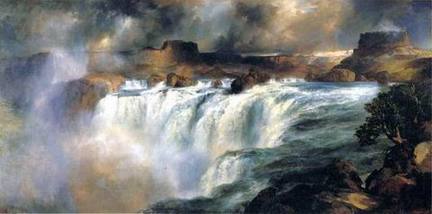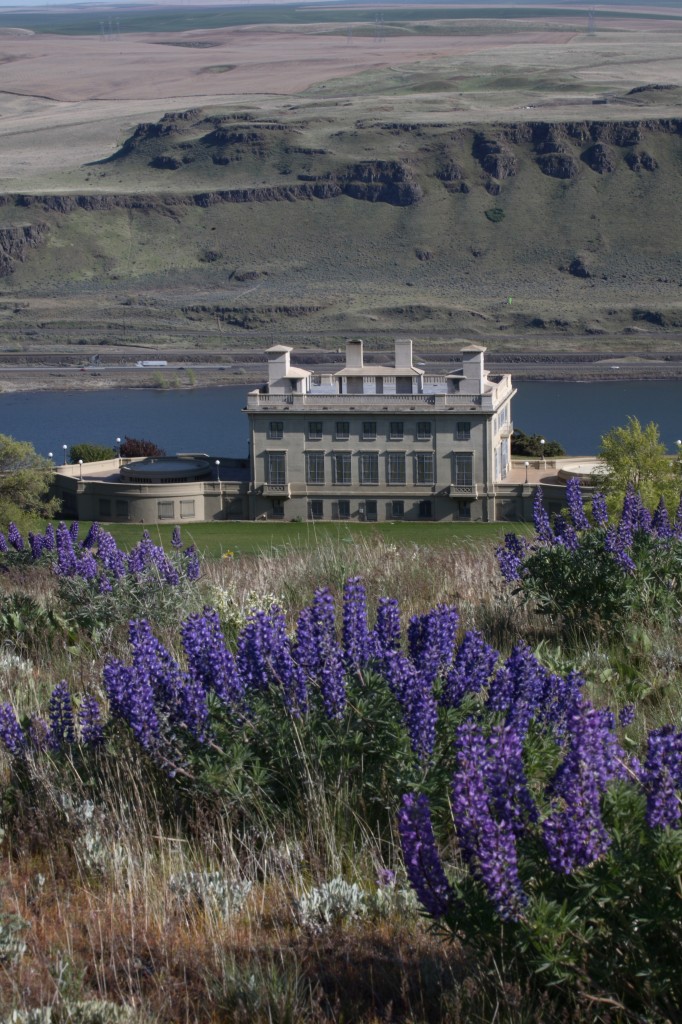
By Bob Hicks
One of the things on our mind today is the great 19th century American painter Thomas Moran. Why? Because his iconic 1900 painting Shoshone Falls on the Snake River, all 12 feet wide of it, opens Saturday in a single-oil show at the Portland Art Museum. It’s on loan from the Gilcrease Museum in Tulsa, Oklahoma.
Mr. Scatter wrote about the show and the painting in this morning’s A&E section of The Oregonian. The main story, Window on the West, is about Moran and how he developed from a very good Hudson River School painter depicting scenes mainly in Pennsylvania into a grand-scale chronicler of vistas from the rugged West.
The second story, PAM chief sees multiple facets of one-piece show, is a lengthy interview with Brian Ferriso, the museum’s executive director, about Moran and the painting and the idea behind one-painting exhibits (which aren’t really solo shows: this one includes a half-dozen smaller Moran watercolors, plus a terrific, six-foot-wide photo of the falls taken in the 1880s). The online interview is a fair amount longer than the print version, and gets into some interesting areas you might like to see.
A nice bonus is this 14-photo gallery by Amiran White of the painting’s installation at PAM. It tells its own intriguing story.
A teaser from the Ferriso interview, this one about Moran’s fellow painter of the West Albert Bierstadt, whose 1869 painting of Mt. Hood is a treasured piece in the Portland museum’s American collection:
… Bierstadt in particular understood the marketplace. He would very much create idyllic scenes, sort of these manufactured landscapes that were compositionally well-shaped. The Mount Hood that we have that Bierstadt did, there is no such place. You can’t go to that place, because the lake that he depicted doesn’t exist. He’s added it.
I once gave a tour to some visitors when I was overseeing a Hudson River School show, and one of them said, “Now this is the kind of art I like. It’s real. It’s a real place.” And I said, “Well, don’t be too sure, because it’s not real. It’s a fabricated view. Don’t be fooled by what you see.”

 Partly because of weather and isolation, Maryhill is a seasonal museum, and it takes its annual break Nov. 15 before starting up again in spring, on the ides of March. That gives you a couple of weeks to make the drive out the Gorge: It’s a little more than 100 miles east of Portland, about the same distance as Eugene, but a much more interesting drive.
Partly because of weather and isolation, Maryhill is a seasonal museum, and it takes its annual break Nov. 15 before starting up again in spring, on the ides of March. That gives you a couple of weeks to make the drive out the Gorge: It’s a little more than 100 miles east of Portland, about the same distance as Eugene, but a much more interesting drive.